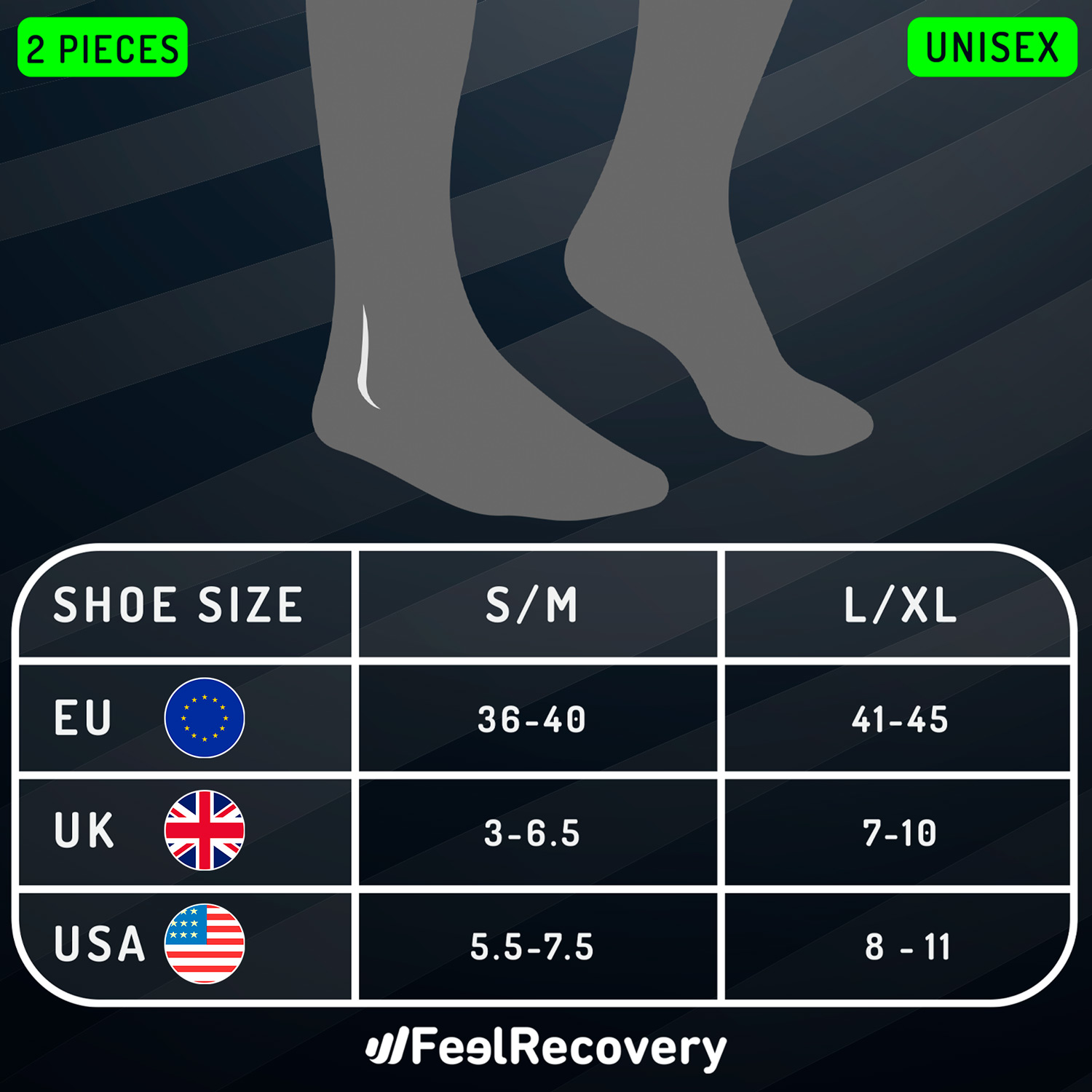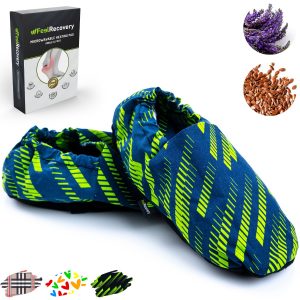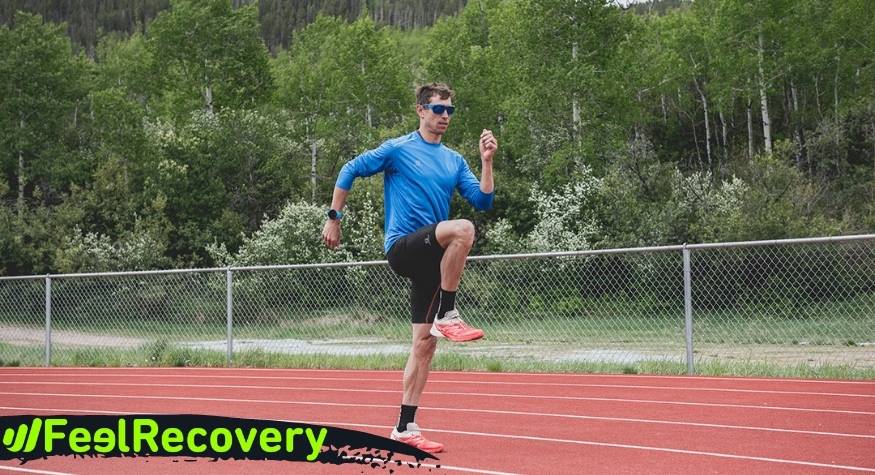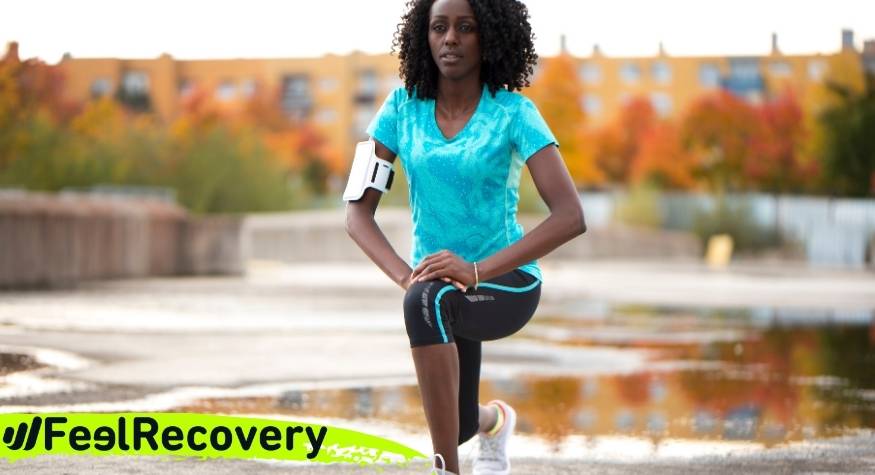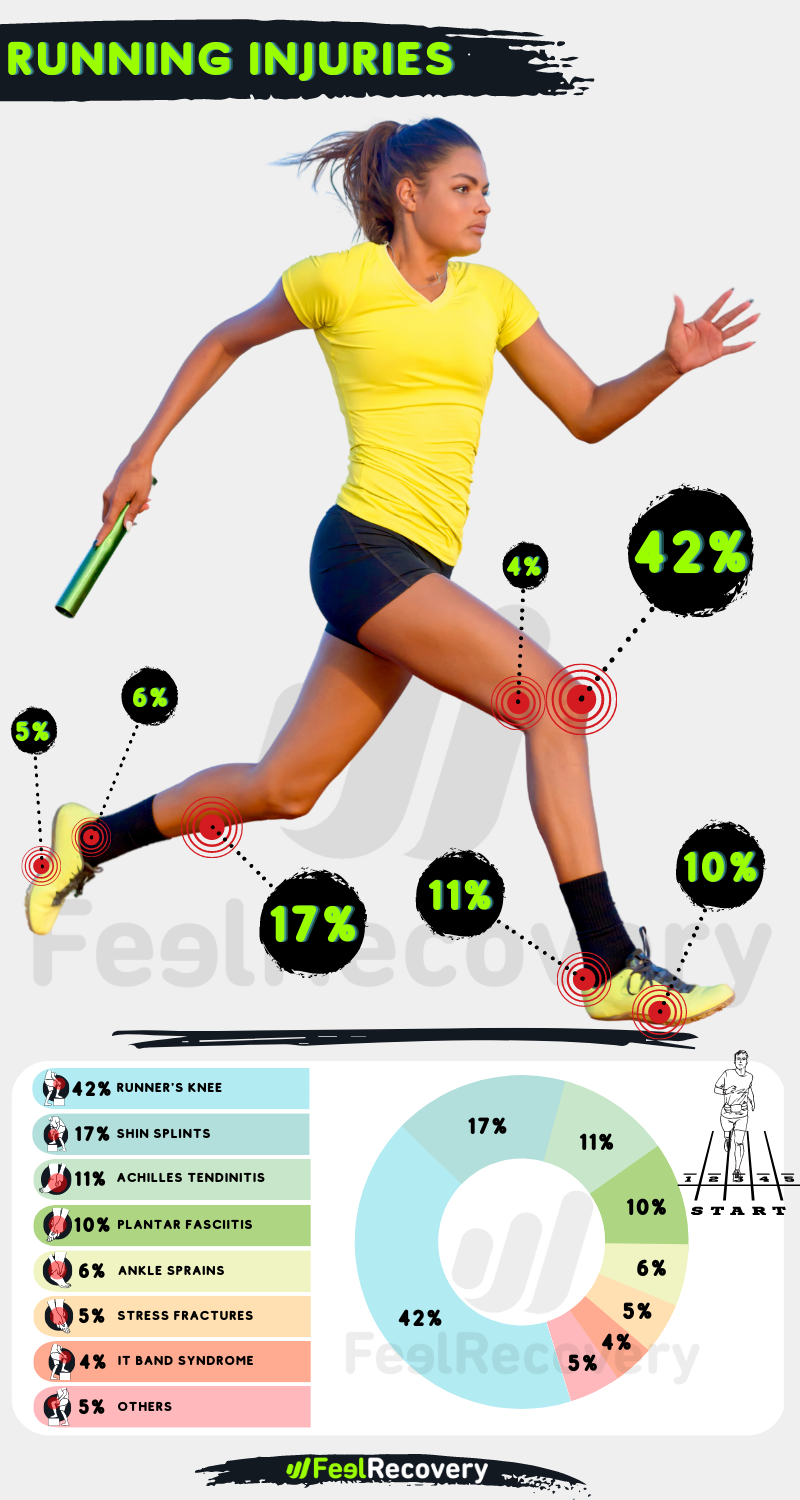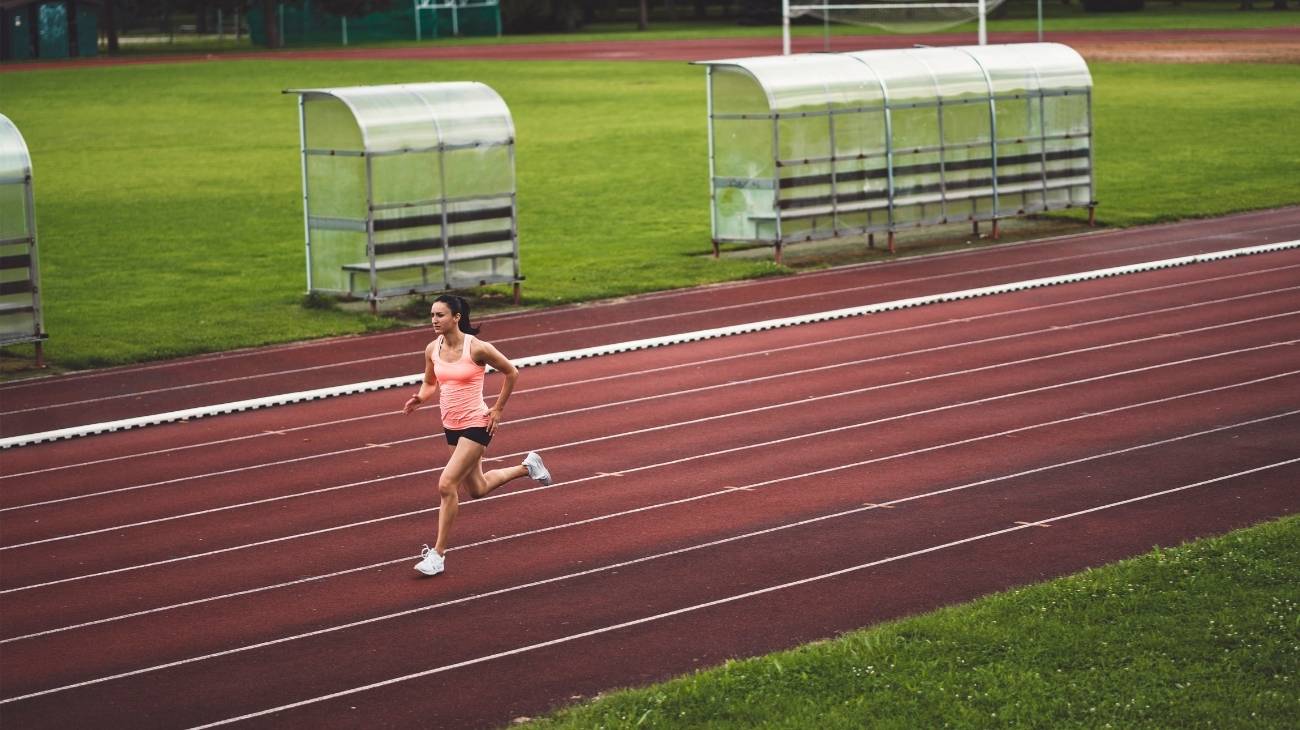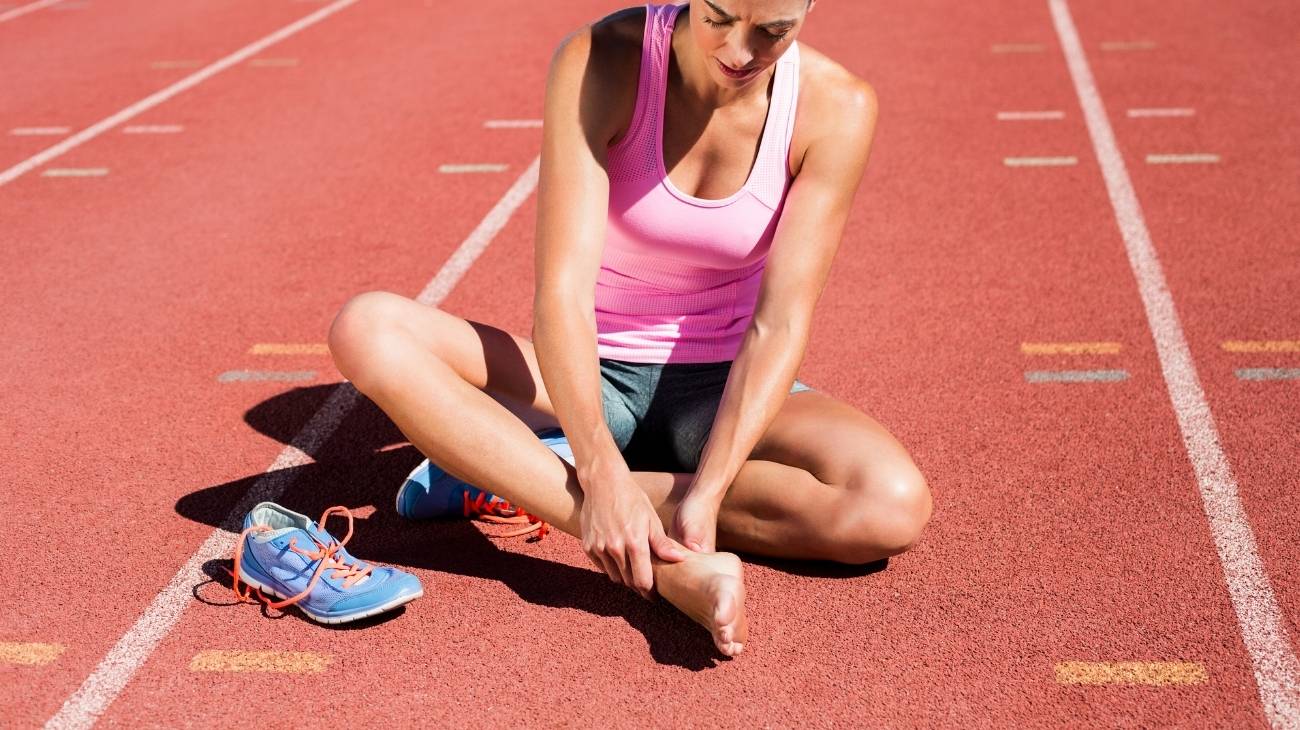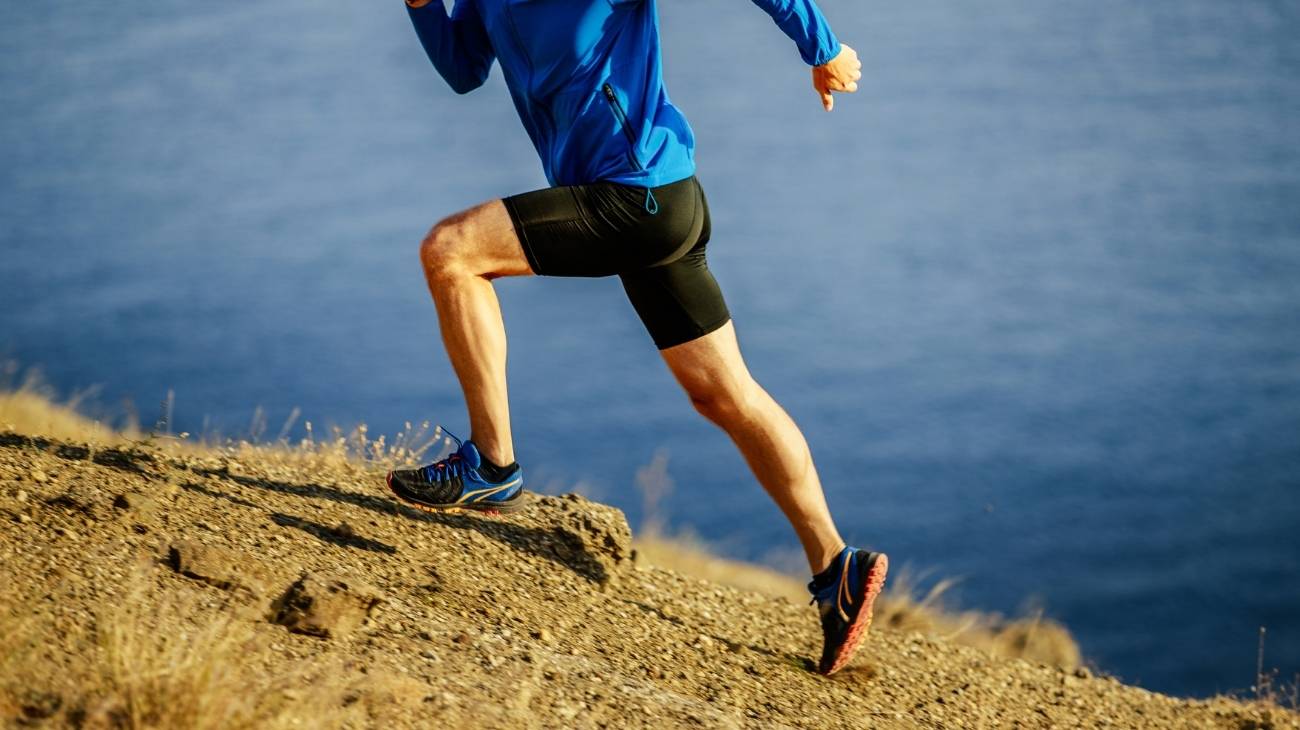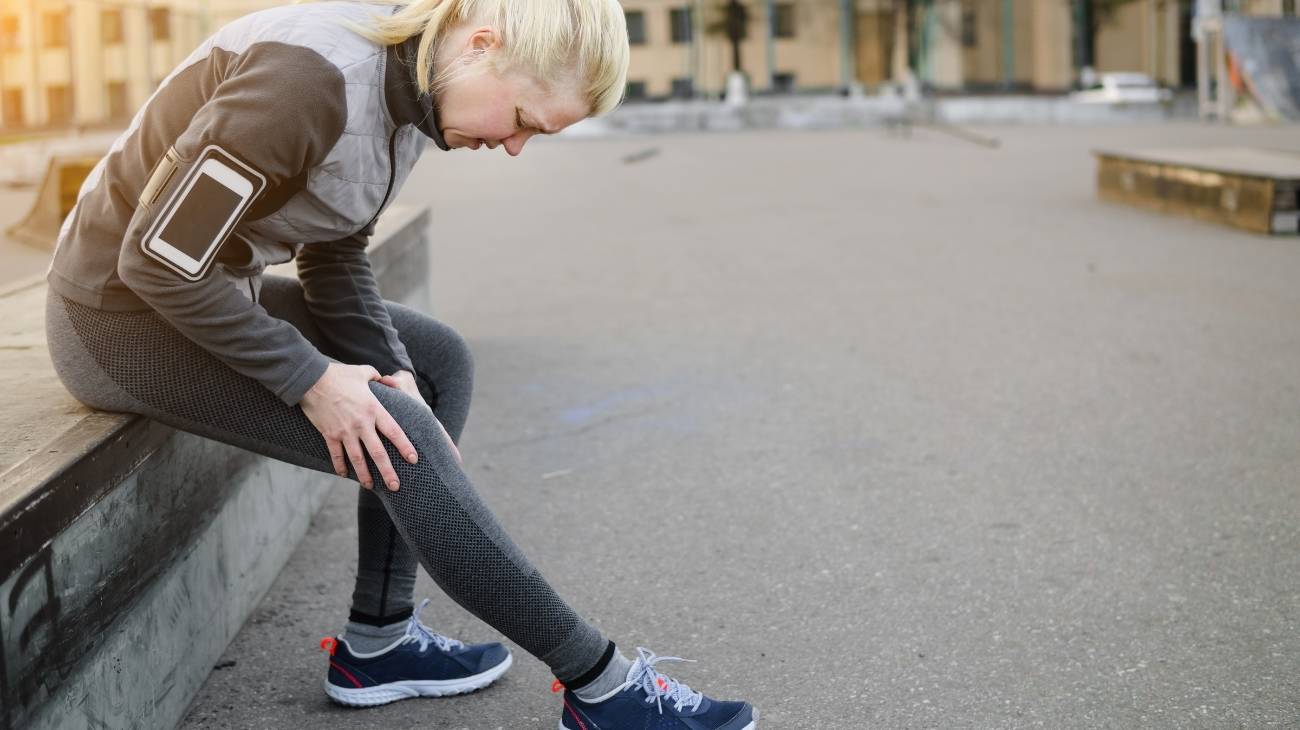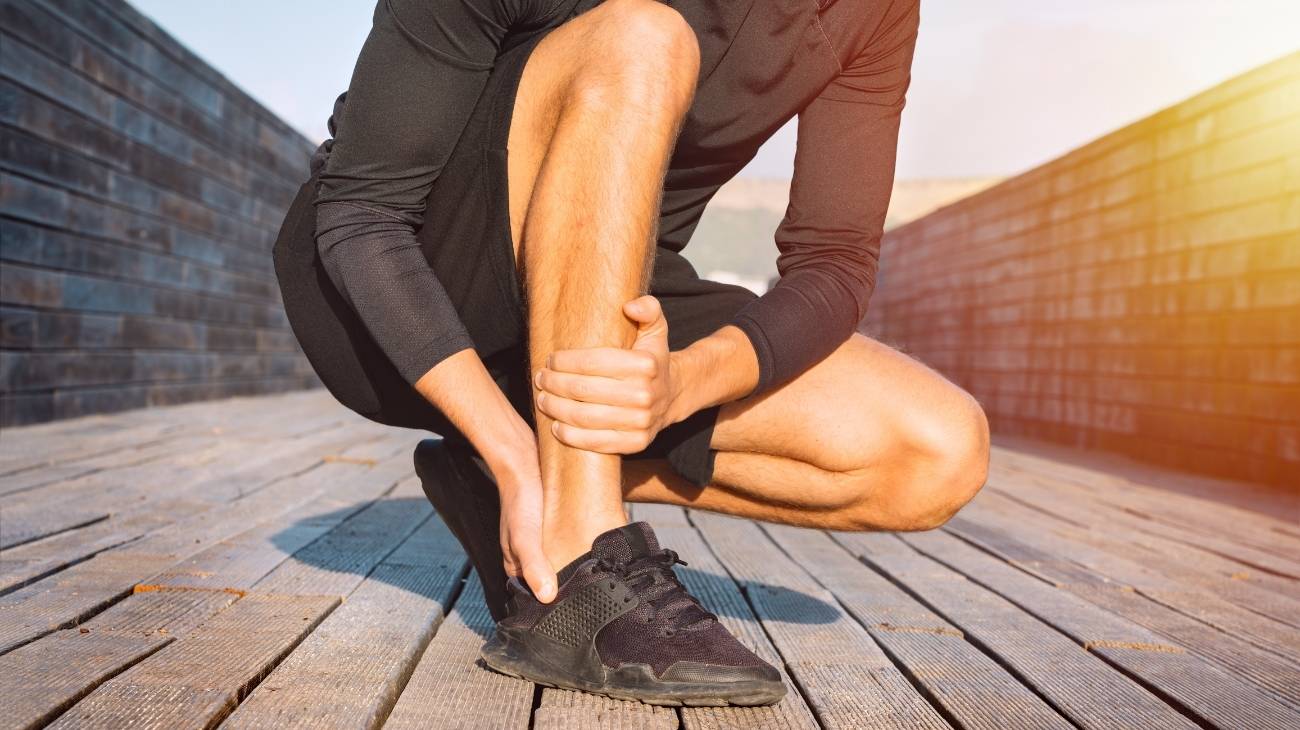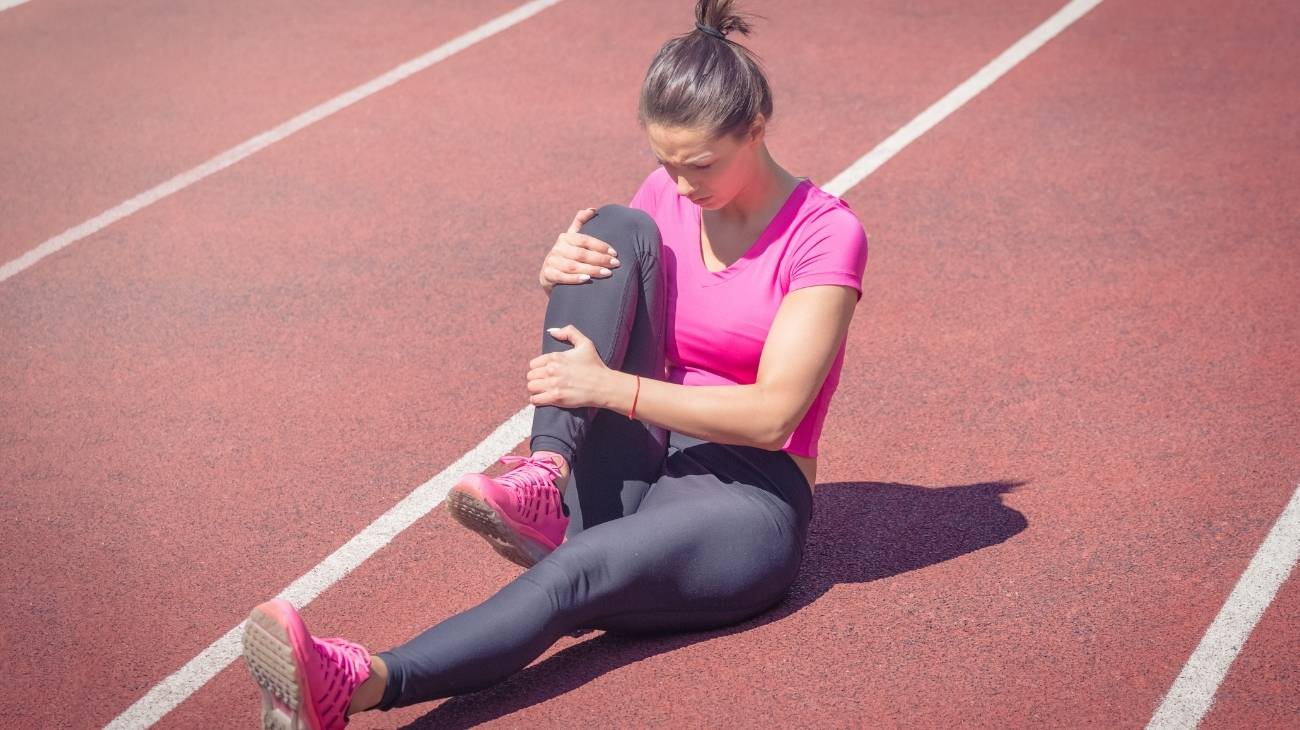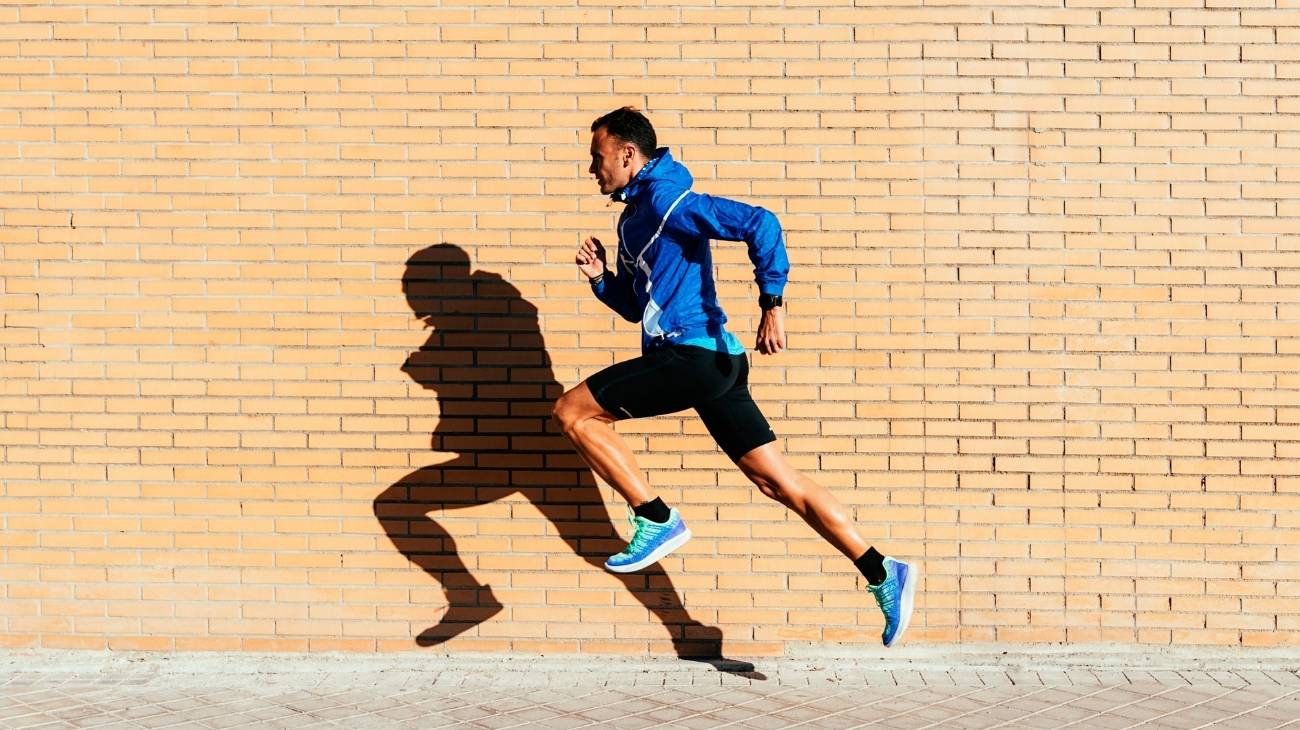Running is a sporting modality that refers to the activity of running, although many followers refer to it as: jogging, athletics, etc. In any case, the term "running" has become the accepted term and its practice is widely spread due to the great benefits it offers to our physical and mental health.
For all these reasons, it is important to provide runners with knowledge of the most common types of running injuries, so that they can take measures to prevent injuries that may occur during running.
What are the most common types of injuries in runners and athletes?
Among the injuries most frequently suffered by runners, we can highlight those that occur in the hips, legs, knees, calves and calves, ankle and feet, being these parts of the lower body the most used areas for the practice of this sport.
Below is a breakdown of each of them:
Hip injuries
The hip is an indispensable joint for any athlete, especially for runners who spend years of their lives practising this high-impact sport. Among the most common hip injuries we can identify the following.
- Hip bursitis: Repetitive overload from running causes inflammation in the bursa, a jelly-like sac found in our joints that protects muscles and tendons from bony protrusions by reducing friction between them. This inflammation results in severe throbbing pain.
- Osteoarthritis of the hip: this is a pathology of the bones, which starts with a degeneration of the articular cartilage, the function of which is to protect them from the friction of one bone against another. Running helps to maintain a healthy bone system, but poor running technique can lead to premature osteoarthritis.
- Hip sprain: a fall or bad footing on uneven ground can cause the muscles and ligaments of the upper femur, which keep it stable with the hip, to overextend and tear, leading to inflammation, pain and loss of mobility in the joint.
- Hip fracture: a sideways fall during a run can cause the neck of the upper head of the femur to fracture or even break. This is a serious injury that can lead to the runner having to give up running if they are over 50 years of age.
Leg injuries
The hamstrings, quadriceps and other leg muscles are the muscles that are used the most when running, so it is normal that they are also the most injured muscles in the lower body. Although in young runners they are usually ailments that do not go beyond a punctual cramp, after some years of practice the muscles are no longer the same and the injuries can get worse.
- Muscle contracture: whether in the hamstrings or quadriceps, this ailment corresponds to an involuntary contraction of one of these muscles, which causes a sharp pain that can be relieved by stretching either of them. Although mild, the runner should pay attention as it is a clear symptom that the muscle is reaching its limit.
- Muscle tear: when muscles reach their limit, their fibres can break, resulting in a tear. This causes severe pain that will force the runner to stop for treatment. It can be caused by intense running without a warm-up, or by receiving a heavy blow.
- Fracture of the femur: this is the strongest bone of all, but a strong blow caused by a fall during a race can cause it to fracture partially or completely. It can occur in the middle of the leg, but it can also happen at one of the ends that connect it to the knee or hip joints.
Knee injuries
The knee often suffers a lot during races due to the enormous amount of impact it has to absorb along the route. Although they are prepared for this, over the years they wear down and become more and more susceptible to the following injuries:
- Iliotibial band syndrome: occurs when the iliotibial band that runs from the knee to the hip on the outer side of the leg becomes inflamed. In runners it can be caused by accumulation of wear and tear, but also by a sideways fall that causes a sharp blow to the outside of the knee.
- Knee sprain: any twist that forces the joint into an unnatural flexion will cause a sprain, which in turn will partially or totally damage the ligaments that make up the joint. Falls during running are the most common cause of this injury.
- Meniscus tears: The meniscus is a series of crescent-shaped cartilage in the middle of the joint that can be torn in the event of a sprain during running. In this case you will feel severe pain and stiffness in the knee that may require surgery to repair the damage.
Calf injuries
The calf muscles can be affected for a variety of reasons, with muscle injuries being the most common. Among the most common are.
- Calf strain: This is the name given to severe pain in the calf muscles caused by overuse. It may present as a pull during running that remains painful for a few days. Treatment requires painkillers and rest as continued use of the affected calf can lead to tearing.
- Calf contracture: this is the involuntary contraction of the calf during physical activity, which indicates that the muscle is reaching its limit, so stopping jogging is essential to avoid a tear, which can be much worse. It often occurs when you start running without warming up properly.
- Fibula fracture: this is the more fragile of the two bones that make up the calf. It can be fractured by a direct blow or by a severe ankle sprain, the latter being the most serious scenario as it usually also involves the deltoid and inner lateral ligaments of the joint.
Ankle injuries
The ankles, like the knees, are joints that tend to suffer a lot during a race, especially if the runner has a poor technique that makes them more susceptible to injuries such as the following.
- Achilles tendonitis: this is the clinical name for inflammation of the Achilles tendon that connects the calf muscles to the calcaneal bone in the heel. It is a mild injury that is caused by the accumulation of stress on this cord during running and is usually treated with rest and analgesics to control the pain.
- Ankle fracture: This is the name given to a fracture that can occur to any of the bones that make up the joint, most commonly to the lower head of the tibia or fibula.
- Deltoid rupture: the ankle is made up of several ligaments including the deltoid ligament which runs on the outside of the ankle and holds the fibula in place. When this ligament is torn, there is severe pain and inflammation of the joint, usually caused by a sprain during a run.
Foot injuries
Feet can become a problem for experienced runners with more than a decade of running because their bones are very fragile, especially the phalanges of the toes, and accumulate wear and tear over the years causing injuries such as the following.
- Plantar fasciitis: Fascia is the soft tissue that runs from the calcaneus to the base of the toes on the sole of the foot. Its function is to give stability and tension to the entire foot and when it becomes inflamed this tension increases, causing severe pain. It is common in high-intensity runners of all ages and is usually treated with physiotherapy and painkillers, or with outpatient surgery if it becomes a chronic condition.
- Broken fifth metatarsal: Running on uneven surfaces can cause the metatarsal bones to accumulate stress until all that stress results in a fracture, with the fifth metatarsal, corresponding to the little toe, being the most common.
Best products for running injury recovery
Bestseller
-
2 Ankle Compression Sleeve (Black/Gray)
£17,50 -
2 Ankle Compression Sleeve (Green/Navy)
£17,50 -
2 Ankle Compression Sleeve (Pink/Bordeaux)
£17,50 -
2 Calf Compression Sleeve (Black/Gray)
£17,50 -
2 Calf Compression Sleeve (Green/Navy)
£17,50 -
2 Calf Compression Sleeve (Pink/Bordeaux)
£17,50 -
2 Knee Compression Sleeve (Black/Gray)
£17,50 -
2 Knee Compression Sleeve (Green/Navy)
£17,50 -
2 Knee Compression Sleeve (Pink/Bordeaux)
£17,50 -
2 Patella Knee Strap (Black/Gray)
£12,95 -
2 Patella Knee Strap (Green/Navy)
£12,95 -
2 Patella Knee Strap (Pink/Bordeaux)
£12,95 -
2 Thigh Compression Sleeve (Black/Gray)
£17,50 -
2 Thigh Compression Sleeve (Green/Navy)
£17,50 -
2 Thigh Compression Sleeve (Pink/Bordeaux)
£17,50 -
Acupressure Mat and Pillow (Black/Gray)
£44,95 -
Acupressure Mat and Pillow (Green/Navy)
£44,95 -
Acupressure Mat and Pillow (Pink/Bordeaux)
£44,95 -
Acupressure Pillow (Black/Gray)
£21,52 -
Acupressure Pillow (Green/Navy)
£21,52 -
Acupressure Pillow (Pink/Bordeaux)
£21,52 -
Back Support Belt (Black)
£29,95 -
Back Support Belt (Green)
£29,95 -
Back Support Belt (Pink)
£29,95 -
Foot Massage Roller for Plantar Fasciitis (Black)
£17,50 -
Foot Massage Roller for Plantar Fasciitis (Green)
£17,50 -
Foot Massage Roller for Plantar Fasciitis (Pink)
£17,50 -
High Density Foam Roller for Muscle (Black/Gray)
£24,95 -
High Density Foam Roller for Muscle (Green/Navy)
£24,95 -
High Density Foam Roller for Muscle (Pink/Bordeaux)
£24,95 -
Ice Massage Roller Ball (Black)
£34,95 -
Ice Massage Roller Ball (Green)
£34,95 -
Ice Massage Roller Ball (Pink)
£34,95 -
Ice Pack for Foot - Cold Therapy Socks (Black)
£21,95 -
Ice Pack for Foot - Cold Therapy Socks (Green)
£21,95 -
Ice Pack for Foot - Cold Therapy Socks (Pink)
£21,95 -
Microwavable Heated Slippers (Hearts)
£21,50 -
Microwavable Heated Slippers (Oxford)
£21,50 -
Microwavable Heated Slippers (Sport)
£21,50 -
Microwaveable Wheat Bag for Pain Relief (Hearts)
£17,50 -
Microwaveable Wheat Bag for Pain Relief (Oxford)
£17,50 -
Microwaveable Wheat Bag for Pain Relief (Sport)
£17,50 -
Pack 2 in 1: Foam Roller High + Soft Density (Black/Gray)
£24,95 -
Pack 2 in 1: Foam Roller High + Soft Density (Green/Navy)
£24,95 -
Pack 2 in 1: Foam Roller High + Soft Density (Pink/Bordeaux)
£24,95 -
Sacroiliac Support Belt (Black)
£21,95 -
Sacroiliac Support Belt (Green)
£21,95 -
Sacroiliac Support Belt (Pink)
£21,95 -
Soft Density Foam Roller for Recovery (Black)
£24,95 -
Soft Density Foam Roller for Recovery (Green)
£24,95 -
Soft Density Foam Roller for Recovery (Pink)
£24,95 -
Sport Compression Socks (1 Pair) (Black/Gray)
£17,50 -
Sport Compression Socks (1 Pair) (Green/Navy)
£17,50 -
Sport Compression Socks (1 Pair) (Pink/Bordeaux)
£17,50 -
Trigger Point Massage Stick (Black)
£12,95 -
Trigger Point Massage Stick (Green)
£12,95 -
Trigger Point Massage Stick (Pink)
£12,95
How to prevent running injuries?
All the aforementioned injuries can be prevented by acquiring certain habits that make the muscles and ligaments much more resistant tissues that wear less and we can have a much healthier and prolonged career as a runner.
- Warm up properly: Warming up will help condition the body to start running. The first thing to do is to stretch all the muscles and joints of the body, starting with the lower body and finishing with the upper body, and then move on to a gentle jog to accelerate the blood flow to lubricate the tissues before starting the actual run.
- Finish your workouts with a cool-down: at the end of a run, you should gradually cool down your body so that your muscles can reuse the lactate generated during the physical activity. This is achieved by gradually reducing the intensity of the jogging until you finish walking, so that when you stop walking, a muscle and joint stretching session can be carried out to end the training session.
- Good nutrition and hydration: to be able to perform at the highest level, you must be well nourished. To this end, it is recommended to consume more than 2000-2500 calories a day, in a balanced diet that provides 30% protein, 40% carbohydrates and preferably 30% unsaturated fats. Foods high in minerals such as iron, zinc and magnesium are welcome because they improve muscle regeneration. As for hydration, you should drink water throughout the day at least every 1 to 2 hours, avoiding feeling thirsty as this is synonymous with dehydration.
- Improve your physical condition: there is no canon in terms of a runner's build and anyone can practice this sport, but it is recommended that you have excellent aerobic endurance so that each route is not a torture for the cardiovascular system.
- Sports massage: Sports massage is a preventive therapy as well as a recovery therapy. It consists of stimulating the cellular regeneration of the muscles by means of techniques such as kneading or percussion that release all the stress accumulated in them during a long race.
- Use of hot and cold therapies: the application of hot and cold can have a very favourable therapeutic effect in the recovery of injuries and even in the prevention of injuries. The former works as an analgesic and anti-inflammatory for injuries in the first few minutes, while the latter can be used as a vasodilator to improve blood flow to the muscles and strengthen them by promoting the assimilation of nutrients.
- Use compression garments: Compression clothing can help you perform better during your run as they minimise the impact of running on your muscles and also reduce fatigue, so you can run longer distances without contractures and other aches and pains caused by muscle wasting.
- Use of acupressure therapies: this holistic therapy consists of releasing tension and stress from various areas of the body. This is done by applying pressure with the fingertips, palm of the hand or elbow to specific points on the body.
- Use of thermotherapy and cryotherapy: this is the application of heat and cold but in a much more advanced way, using extreme temperatures in short periods of time to stimulate the recovery of muscle cells. Together they have been proven to have a favourable effect and should only be applied by a trained professional.
- Use the right equipment: Most running injuries are caused by using the wrong equipment, especially shoes. Wearing shoes that do not absorb the impacts generated by running well will negatively affect the health of muscles and joints.
How to apply the RICE therapy to treat first aid injuries in runners?
The PRICE therapy (an update of the RICE therapy), consists of a series of steps that will alleviate the first symptoms of a traumatic running injury, and can even be used throughout the injury to aid recovery.
Here's how to apply it correctly:
- Protection: protection of the injured limb will be necessary to prevent the injured limb from suffering a subsequent blow that could worsen the clinical picture of the injury.
- Rest: keeping the limb completely still is important as long as the extent of the injury is not known. Otherwise there is a risk of aggravating the injury.
- Ice: An excellent way to relieve pain and reduce swelling from a muscle sprain or tear is to apply ice for about 10-15 minutes for the first 48-72 hours.
- Compression: using a compression bandage will help keep the injury from continuing its inflammatory process while we cannot continue to apply ice, alternatively use compressive knee braces, ankle braces or thigh braces.
- Elevation: to help with all the above steps we can elevate the injured limb above the level of the heart, this will further reduce the inflammation process and speed up the recovery process.
References
- Fields, K. B., Sykes, J. C., Walker, K. M., & Jackson, J. C. (2010). Prevention of running injuries. Current sports medicine reports, 9(3), 176-182. https://journals.lww.com/acsm-csmr/Fulltext/2010/05000/Prevention_of_Running_Injuries.00014.aspx
- Van Mechelen, W. (1992). Running injuries: a review of the epidemiological literature. Sports medicine, 14, 320-335. https://link.springer.com/article/10.2165/00007256-199214050-00004
- Messier, S. P., & Pittala, K. A. (1988). Etiologic factors associated with selected running injuries. Medicine and science in sports and exercise, 20(5), 501-505. https://europepmc.org/article/med/3193867
- Lysholm, J., & Wiklander, J. (1987). Injuries in runners. The American journal of sports medicine, 15(2), 168-171. https://journals.sagepub.com/doi/abs/10.1177/036354658701500213
- Hamill, J., van Emmerik, R. E., Heiderscheit, B. C., & Li, L. (1999). A dynamical systems approach to lower extremity running injuries. Clinical biomechanics, 14(5), 297-308. https://www.sciencedirect.com/science/article/abs/pii/S0268003398900924
- Arnold, M. J., & Moody, A. L. (2018). Common running injuries: evaluation and management. American family physician, 97(8), 510-516. https://www.aafp.org/pubs/afp/issues/2018/0415/p510.html
- van Mechelen, W., Hlobil, H., Kemper, H. C., Voorn, W. J., & de Jongh, H. R. (1993). Prevention of running injuries by warm-up, cool-down, and stretching exercises. The American journal of sports medicine, 21(5), 711-719. https://journals.sagepub.com/doi/abs/10.1177/036354659302100513
- Junior, L. C. H., Costa, L. O. P., & Lopes, A. D. (2013). Previous injuries and some training characteristics predict running-related injuries in recreational runners: a prospective cohort study. Journal of Physiotherapy, 59(4), 263-269. https://www.sciencedirect.com/science/article/pii/S1836955313702030
- Saragiotto, B. T., Yamato, T. P., Hespanhol Junior, L. C., Rainbow, M. J., Davis, I. S., & Lopes, A. D. (2014). What are the main risk factors for running-related injuries?. Sports medicine, 44, 1153-1163. https://link.springer.com/article/10.1007/s40279-014-0194-6
- Brody, D. M. (1982). Techniques in the evaluation and treatment of the injured runner. The orthopedic clinics of North America, 13(3), 541-558. https://europepmc.org/article/med/6124922
























































